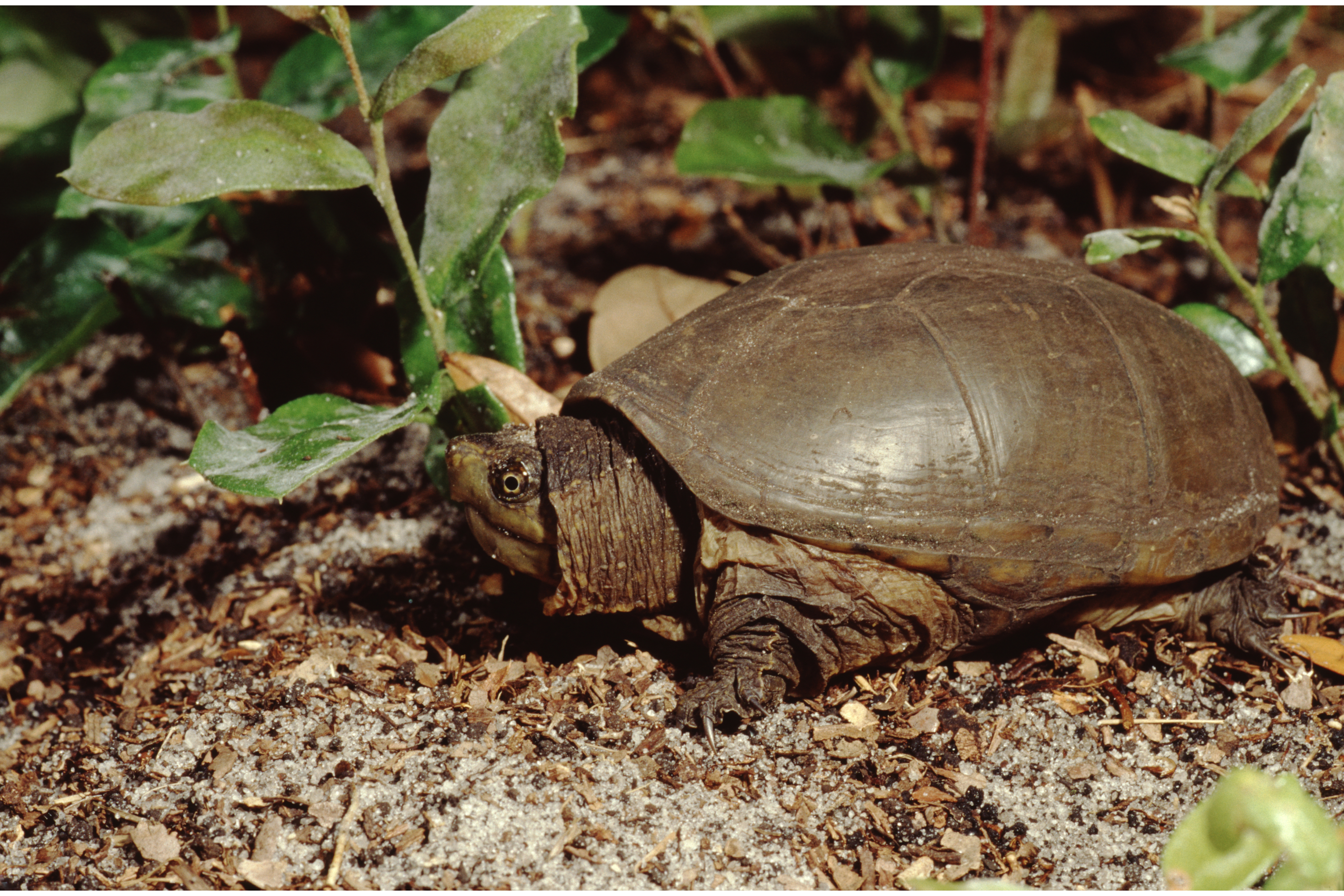Eastern mud turtle
(Kinosternon subrubrum)

Description
The eastern mud turtle (Kinosternon subrubrum) or common mud turtle is a common species of turtle in the family Kinosternidae. The species is endemic to the United States. There are two recognized subspecies. The eastern mud turtle is a small and often hard to identify species. It measures 3–4 in (7.6–10.2 cm) in carapace length. The carapace is keelless, lacks any pattern, and varies in color from yellowish to black. The plastron is large and double hinged, and can be yellowish to brown, and may sometimes have a dark pattern. The chin and throat are a yellowish grey, streaked and mottled with brown, while the limbs and tail are grayish. The eye, or iris, of the eastern mud turtle is yellow with dark clouding, and its feet are webbed. Mud turtles (genus Kinosternon) are fresh water turtles that are found in the southern United States. They live in rivers, lakes and swamps. Mud turtles prefer ponds that have a lot of vegetation. These animals can generally be found in spring-fed streams, and they prefer clean, oxygenated water. In the wild, they also prefer sandy and muddy areas, as they will hibernate by burrowing into the mud. Mating occurs in K. subrubrum during early spring followed by egg laying in May to early June. Clutch sizes vary from 2 to 5. The eastern mud turtle is found in the US states of Alabama, Arkansas, Delaware, Florida, Georgia, Illinois, Indiana, Kentucky, Louisiana, Maryland, Mississippi, Missouri, New Jersey, New York, North Carolina, Oklahoma, Pennsylvania, South Carolina, Tennessee, Texas, and Virginia. In Indiana, the eastern mud turtle is listed as an endangered species.
Taxonomic tree:







